Italian painter, graphic artist, and architect, Raphael embodied the idea of the lofty ideals of the Renaissance. Along with Michelangelo and Leonardo da Vinci, he is one of the greatest representatives of the art of the High Renaissance.
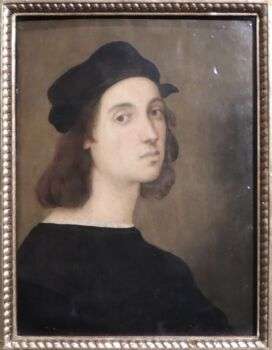
Image source: https://search.creativecommons.org/photos/809cd54e-28a3-459e-a196-e2fafc3ce3b2 by Shakko
About His Life
Raphael was born in a family of court painters on April 6, 1483, in Urbino, Italy. In 1504, he began to study painting with the famous Perugino. There, he had access to the highest circles of the court society, which positively affected his career. Additionally, he studied many masterpieces by Leonardo da Vinci and Michelangelo and borrowed a lot from them, but retained his authentic style and unique technique. Further, he distinguished himself by his sociability. In 1514, he entered the service of Pope Julius II as chief architect. During his short life, he became one of the most famous and wealthy artists in Italy. Then, Raphael died in Rome on April 6, 1520, and his body rests in the Pantheon.
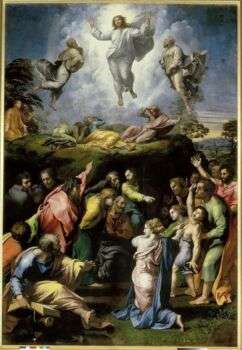
Image source: https://search.creativecommons.org/photos/f3d9a2bf-0aec-4858-bdc0-f3d121647abb by Institutnationaldhistoiredelart
His Major Works
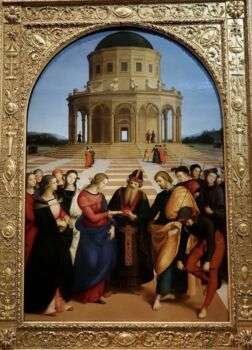
Image source: https://search.creativecommons.org/photos/f2a42613-dffa-456d-aae7-5226996c3738 by Prof. Mortel
Paintings.
- The Marriage of the Virgin (1504): Painted in his early years, based on the painting on the same theme by his teacher Pietro Perugino
- Saint George and the Dragon (1506): Depicts the most famous work on the well-known legend of Saint George slaying the Dragon
- La belle Jardinière (1507): Shows the calm faced Madonna in an informal pose with Christ and the young John the Baptist
- Sistine Madonna (1512):Depicts the Madonna, holding the Christ Child and flanked by Saint Sixtus and Saint Barbara, and it is considered one of the finest paintings by many notable critics
- La Donna Velata (1515): Shows Raphael’s attention to detail which contributes to bringing the painting to life
- Portrait of Baldassare Castiglione (1515): Considered a quintessential example of the High Renaissance gentleman
- Transfiguration (1520): The last painting created by Raphael, which can be interpreted as depicting the contrast between God and man. Giorgio Vasari calls it “Raphael’s most beautiful and most divine work”.
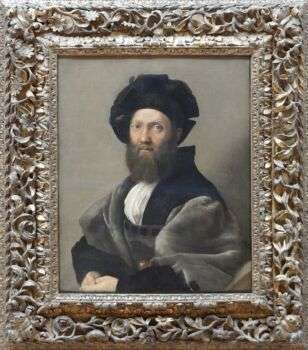
Image source: https://search.creativecommons.org/photos/f298d5f7-a6e8-4e67-aeb8-e62965775219 by Lejeune Grégory

Image source: https://search.creativecommons.org/photos/8e9a230f-e21a-4df2-8b9e-ea621d06c341 by Institutnationaldhistoiredelart
Frescoes.
Raphael’s frescoes in the Raphael Halls of the Apostolic Palace are the quintessential works of art from the High Renaissance in Rome. The Raphael Halls contain the richest series of High Renaissance paintings ever produced in one place. The most notable two murals in the Hall of the Signature are:
- Disputation of the Holy Sacrament (1510): Shows hows the image of church spanning both earth and heaven, and it represents Theology
- The School of Athens (1511): Considered the perfect embodiment of the classical spirit of the High Renaissance and is the most famous painting by Raphael.
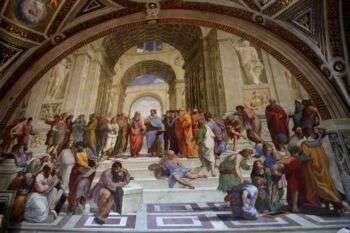
Image source: https://search.creativecommons.org/photos/ca30c3b6-011e-44ce-a0ad-bee9eaeb33e7 by Bradley N. Weber
The Triumph of Galatea is a fresco masterpiece completed in 1512 by Raphael for Villa Farnesina in Rome. This is an ancient Greek mythological plot, which, perhaps, has no analogies in its ability to convey the spirit of classical antiquity.
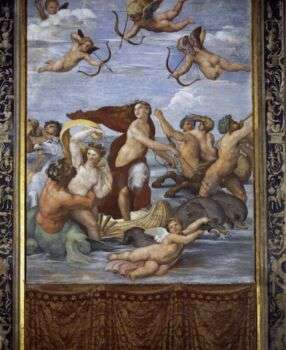
Image source: https://en.wikipedia.org/wiki/Raphael#/media/File:Raphael’s_Triumph_of_Galatea_01.jpg
Architecture
Raphael created the chapel in Sant Eligio degli Orefica (1509). In addition to religious buildings, he also designed palaces. His architectural style is distinguishable by the use of decorative elements, as well as a classical focus, like his predecessor Donato Bramante.
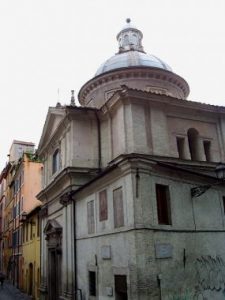
Image source: https://upload.wikimedia.org
Raphael’s Style
- During the early years, Perugino’style influenced him, but despite the similarities, his work detaches from it in form and space. Further, the graceful figures are woven into a unity unknown in Perugino’s art.
- Middle years: His painting style has smooth dynamics, greater seriousness, and grandeur. Raphael also used painting techniques, similar to those of Leonardo da Vinci. In Florence. Additionally, he often drew with pen and ink, using them as a more crude means of creating and exploring ideas.
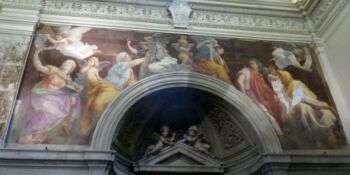
Image source: https://search.creativecommons.org/photos/88a88d1d-02dd-4cf0-a09b-627ce842b480 by Maludemi
- In Rome, he developed his oil technique, due to his connection to Venetian painting. In addition, the range of his impasto in some of his oil paintings bears little resemblance to the work of earlier artists, which means that it may have been one of his rare innovations. Further, he achieved greater shade depth and richer colors associated with an oily environment.
- He gradually abandoned the metal point in favor of chalk and red chalk, especially for working on the female figures in the Triumph of Galatea.
- His works demonstrate his attention to basic geometric composition and his practice of examining each figure separately from the living model.
- He mainly used oil paint, but sometimes egg tempera in the early years.
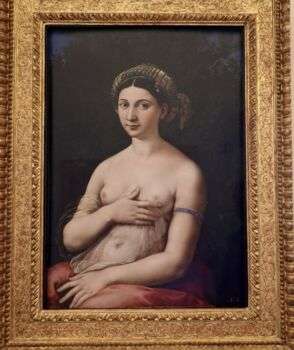
Image source: https://search.creativecommons.org/photos/c7a99226-6102-40e3-a9b6-f5eb1ec9c531 by Prof. Mortel
Info sources:
http://www.visual-arts-cork.com/museums/raphael-rooms-vatican.htm
http://www.encyclopedia.com/people/literature-and-arts/european-art-1599-biographies/raphael
http://www.biographyonline.net/artists/raphael.html
http://www.artble.com/artists/raphael/more_information/style_and_technique
